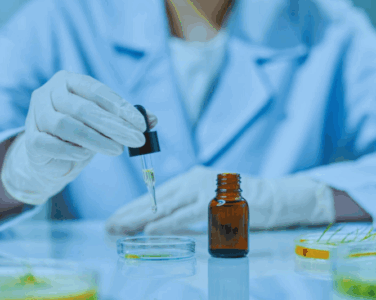Cosmetic safety is a fundamental requirement of Regulation (EC) No. 1223/2009, whose primary objective is to ensure the protection of human health. Every cosmetic product marketed in the European Union must be accompanied by a Cosmetic Product Safety Report (CPSR), prepared by a qualified safety assessor. This article outlines the technical and regulatory foundations of the safety evaluation, the role of the assessor, and the structure of the product dossier.
What Is the Cosmetic Safety Assessment?
The safety assessment involves a comprehensive analysis of all aspects related to the product’s composition, intended use, and exposure, in order to determine whether it can be considered safe for human health under normal or reasonably foreseeable conditions of use.
This process is formalized through the CPSR, a mandatory document that must be included in the Product Information File (PIF) and kept available for inspection by the competent authorities at the place of manufacture or importation.
Regulatory Framework: Regulation (EC) No. 1223/2009
Article 10 of Regulation (EC) No. 1223/2009 establishes that:
- Every cosmetic product must undergo a safety assessment before being placed on the market.
- The Cosmetic Product Safety Report must be signed by a suitably qualified safety assessor.
- The assessment must be based on relevant and updated information on raw materials and the finished product.
You can access the full regulation on the EUR-Lex official page.
Who Can Be a Safety Assessor?
According to the regulation, the assessor must hold a university degree in pharmacy, toxicology, medicine, or a related discipline, and have specific knowledge in:
- Experimental and predictive toxicology
- Risk assessment methodology
- Cosmetic legislation
- Toxicological evaluation of cosmetic ingredients
They must also have practical experience in:
- Drafting CPSRs
- Interpreting analytical results
- Identifying hazards and estimating exposure
Structure of the CPSR
The CPSR is divided into two parts, as outlined in Annex I of Regulation 1223/2009:
Part A: Cosmetic Product Safety Information
This section contains objective product data, such as:
- Qualitative and quantitative composition
- Physico-chemical properties and stability
- Toxicological profile of each ingredient
- Impurities, traces, and packaging
- Intended use and product category
- Systemic and topical exposure
- Experimental test results (e.g., stability, packaging compatibility)
- Information on undesirable effects and relevant data
Part B: Cosmetic Product Safety Assessment
This is the motivated professional opinion of the assessor and must include:
- Conclusions on product safety
- Necessary warnings or instructions for use
- Detailed scientific reasoning
- Signature, qualifications, and experience of the assessor
Key Elements in the Cosmetic Safety Assessment
When drafting the CPSR, the following aspects must be considered:
- Aggregate exposure: taking into account the combined use of multiple products containing similar ingredients
- Vulnerable populations: such as children under 3 years, pregnant women, or individuals with sensitive skin
- Ingredient interactions
- Risks from packaging (migration, reactivity)
The assessor must justify all conclusions based on scientific literature, toxicological databases, and available experimental results.

Tools and Supporting Databases
Assessors may rely on recognized sources such as:
- CosIng database (cosmetic ingredients)
- Opinions from the SCCS (Scientific Committee on Consumer Safety)
- Data from raw material suppliers or manufacturers
- Toxicological studies and scientific literature
Tools such as QSARs and SCCS Notes of Guidance are also used to estimate risk without animal testing.
What If There Is Insufficient Data?
In such cases, the assessor should:
- Seek alternative sources
- Justify data gaps using analogies with similar chemical structures
- In critical cases, recommend additional testing or even consider the product unsafe
Transparency and traceability of decisions are essential to validate the CPSR.
Cosmetic Safety in Natural Products
Cosmetic products based on natural or organic ingredients are not exempt from toxicological evaluation. The natural origin of an ingredient does not guarantee its safety and must be assessed like any other:
- Allergen evaluation
- Presence of contaminants (e.g., pesticides, heavy metals)
- Interaction with preservatives
The assessor must evaluate the extract’s quality, botanical origin, extraction method, and content of active compounds.
Safety Assessment of Imported Cosmetics
Imported products must comply with the same requirements. Often:
- A valid CPSR is not provided
- The composition is not properly documented
- Traces or impurities are not identified
The responsible person for marketing in the EU must ensure the CPSR is adapted to European standards, even if the product was previously assessed in other countries.
Impact of the Safety Assessment on Labeling
One of the most practical outcomes of the safety assessment is determining specific warnings and labeling requirements. These warnings may be mandatory if an ingredient is listed in the annexes of Regulation 1223/2009 (e.g., preservatives or UV filters with usage conditions).
The assessor must identify:
- Mandatory indications
- Concentration limits that must be reflected on the label
- Presence of allergens or sensitizing ingredients
Compliant labeling is essential to avoid penalties and ensure clear communication with consumers. Additionally, the CPSR may recommend including extra warnings based on exposure or vulnerable groups.
New Trends in Cosmetic Safety
Safety assessment is not a static process. In recent years, new trends have emerged that impact both assessors and product developers:
- Green and sustainable cosmetics: with innovative plant-based ingredients that require rigorous safety evaluations
- Increase in personalized cosmetics: demanding more tailored assessments
- Growing demand for transparency and traceability: from consumers and regulators
- Development of alternative methods to animal testing, such as computational models (QSARs) and cell cultures
These trends require assessors to undergo continuous training and to update their criteria as science and regulation evolve.
Cosmetic Safety at SHAPYPRO
At SHAPYPRO, we offer comprehensive safety assessment services, including:
- Preparation of CPSRs in compliance with Regulation (EC) No. 1223/2009
- Support for manufacturers and importers
- Toxicological review of ingredients
- Labeling review according to Annexes III, IV, and VI of the regulation
We can also assist with the rest of the PIF and the CPNP notification process. Visit our article on regulatory consultancy for cosmetics.
📩 Contact us for more information.
Conclusion
Cosmetic safety assessment is a technical and regulated process whose goal is to protect consumer health through a rigorous scientific approach. It involves detailed analysis of each ingredient, expected exposure, and potential risks, and must be conducted by qualified professionals.
A well-structured CPSR in accordance with Regulation 1223/2009 is essential for regulatory compliance and the legal marketing of a cosmetic product in the EU.
Working with expert partners like SHAPYPRO ensures quality, efficiency, and regulatory confidence.


